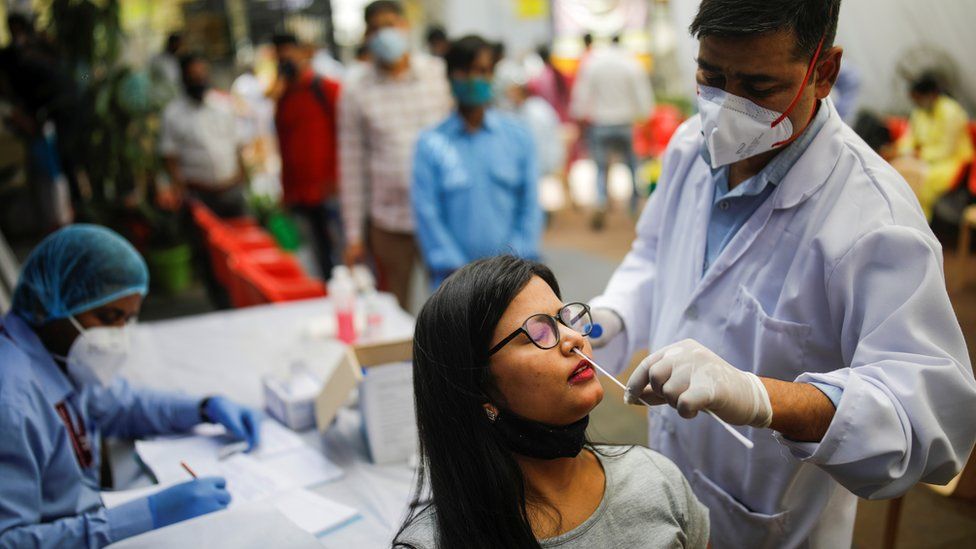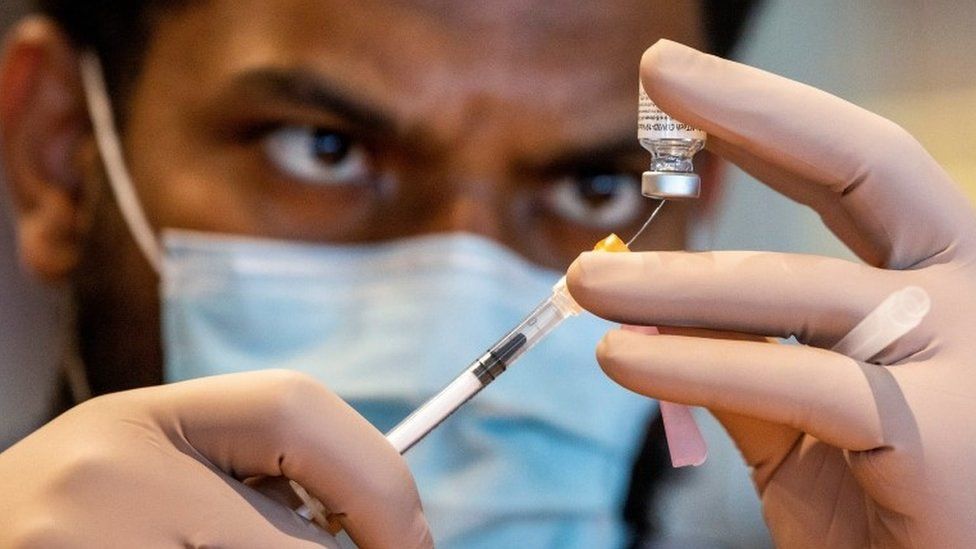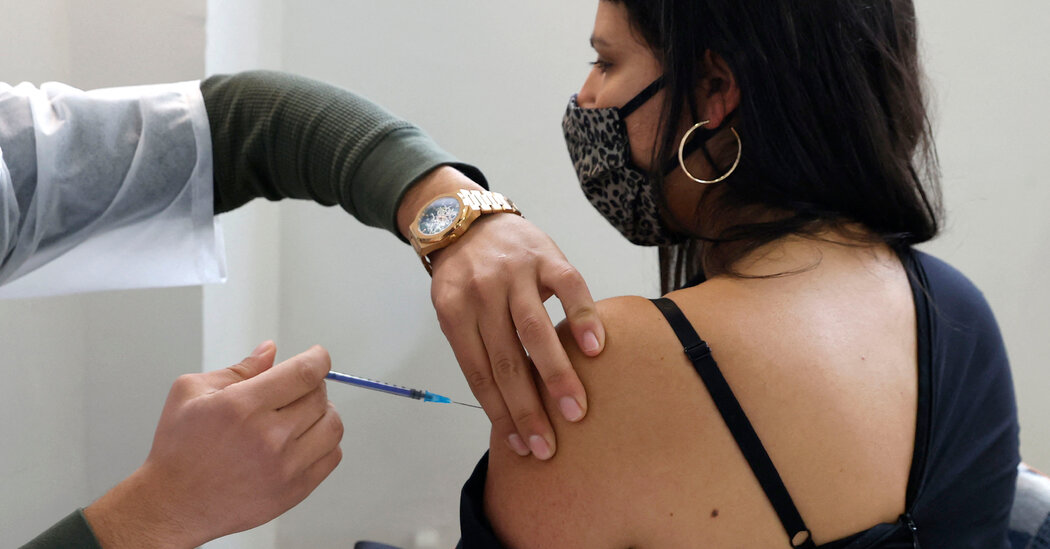India Covid: Government says new variant linked to surge
SharecloseShare pageCopy linkAbout sharingimage copyrightReutersIndia has said a new variant of the coronavirus first discovered there in March may be linked to a deadly second wave.Samples containing the “double mutant”- or B.1.617 variant – have been found in several states with high case numbers.An official with the National Centre for Disease Control said, however, that they had still been unable to fully establish a correlation.A double mutant is when two mutations come together in the same virus.What is the India Covid variant?India is a Covid disaster – it didn’t have to beMeanwhile, India reported a record 412,000 cases in the space of 24 hours on Wednesday, and 3,980 deaths. The government’s top scientific adviser also warned a third wave is inevitable.Speaking at a health ministry news briefing, K VijayRaghavan admitted that experts had not anticipated the “ferocity” of the surge in cases. “Phase three is inevitable, given the high levels of circulating virus,” he added during a news briefing. “But it is not clear on what timescale this phase three will occur… We should prepare for new waves.”The current surge of the virus has already overwhelmed the healthcare system with hospital beds, oxygen and even crematorium space in short supply.Several states are under localised lockdowns and curfews, but the government is reluctant to impose a national lockdown, for fear of the impact on the economy. Where has the ‘double mutant’ variant been found?Out of roughly 13,000 samples sequenced, more than 3,500 were found to be variants of concern – including B.1.617 – across eight states. The B.1.617 variant was reported in several states reporting surges including Maharashtra, Karnataka, West Bengal, Gujarat and Chhattisgarh.For more than a month, Delhi insisted that the variant had no link to the current surge. Virologist Dr Shahid Jameel told the BBC’s Vikas Pandey earlier that India started seriously looking at mutations fairly late, with sequencing efforts only “properly started” in mid-February 2021.India is sequencing just over 1% of all samples at the moment. “In comparison, the UK was sequencing at 5-6% at the peak of the pandemic. But you can’t build such capacity overnight,” he said.Indians’ desperate wait for Covid jab to get longerUS backs waiver on vaccine patents to boost supplyAnd although the central government now says there is a correlation, it added the link is not “fully established”.”Its epidemiological and clinical correlation is not fully established… without the correlation, we cannot establish direct linkage to any surge. However, we have advised states to strengthen public health response – increase testing, quick isolation, prevent crowds, vaccination,” Sujeet Singh, National Centre for Disease Control said.image copyrightGetty ImagesWhere are we with case numbers?A number of states reported their highest fatalities in a single day on Wednesday – including the northern states of Uttar Pradesh, Haryana and Punjab and Tamil Nadu and Karnataka in the south.The western state of Maharashtra, which has had the highest caseload throughout the pandemic, reported 920 deaths.However, experts say the tally could be far higher due to reduced testing, and under-reporting of deaths. In a weekly report, the World Heath Organization said that India accounted for nearly half the coronavirus cases reported worldwide last week, and a quarter of deaths. Indian delegates in UK for G7 talks self-isolateCovid cases at Everest raise fears of outbreakAn Indian delegation that travelled to the G7 Foreign Ministers’ meeting in London this week, is self-isolating after two of its members tested positive for Covid-19. India’s foreign minister Subrahmanyam Jaishankar travelled with the delegation to London, and says he will attend the rest of the summit virtually. What about vaccines?India has been unable to meet an ambitious vaccination programme – it initially wanted to vaccinate 300 million people by July – and there’s been a dramatic drop in jabs because of a shortage of doses.Just 269 million people out of a population of 1.4 billion have received both shots, and about 128 million have only received a single dose. Vaccine stocks in the country have nearly dried up, with the latest age bracket to become eligible – adults under the age of 45 – struggling to register and secure appointments.Experts say lockdowns and vaccinations are the only way out, but that the government would need to act now in order to break the chain.
Read more →





